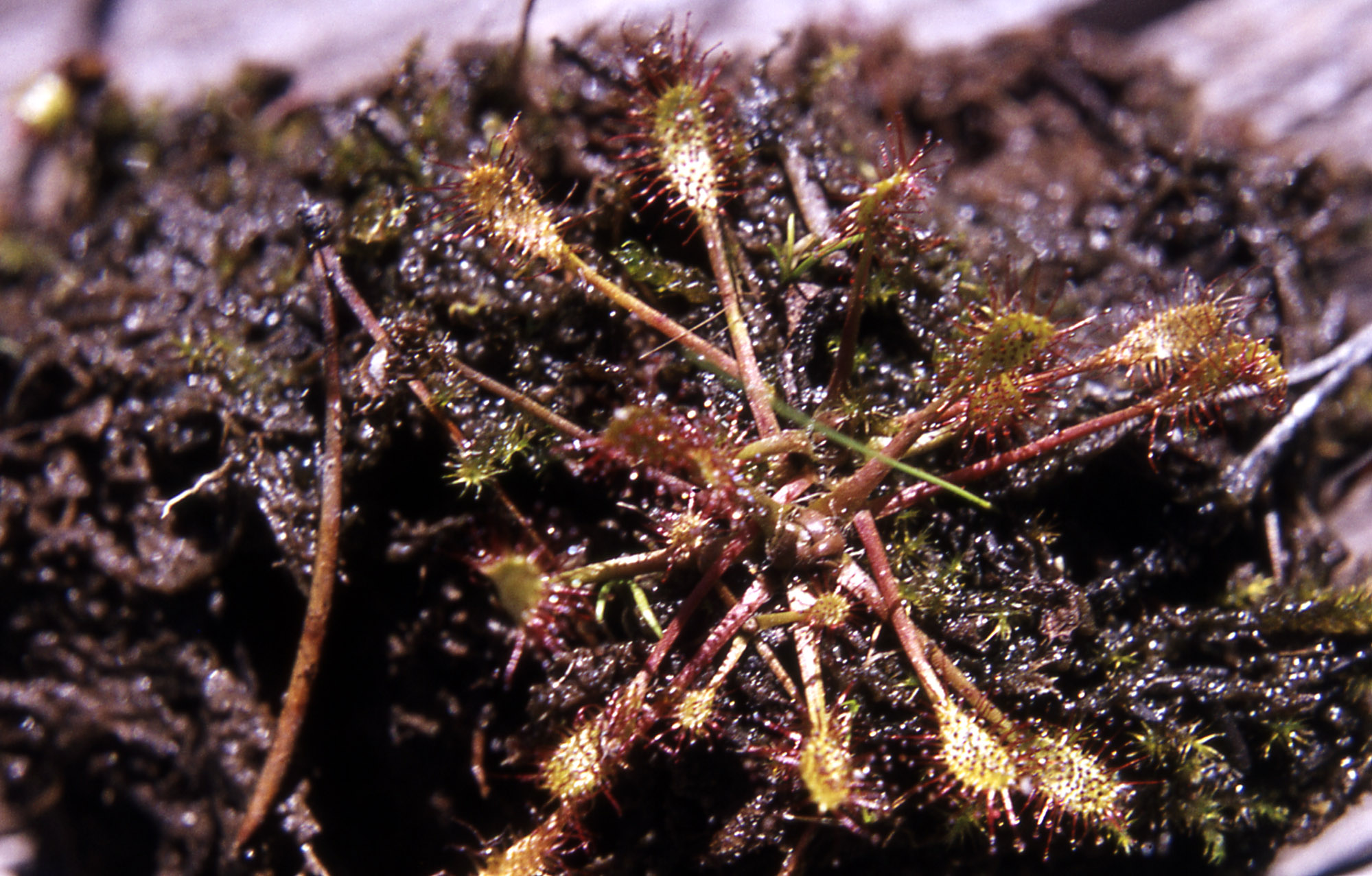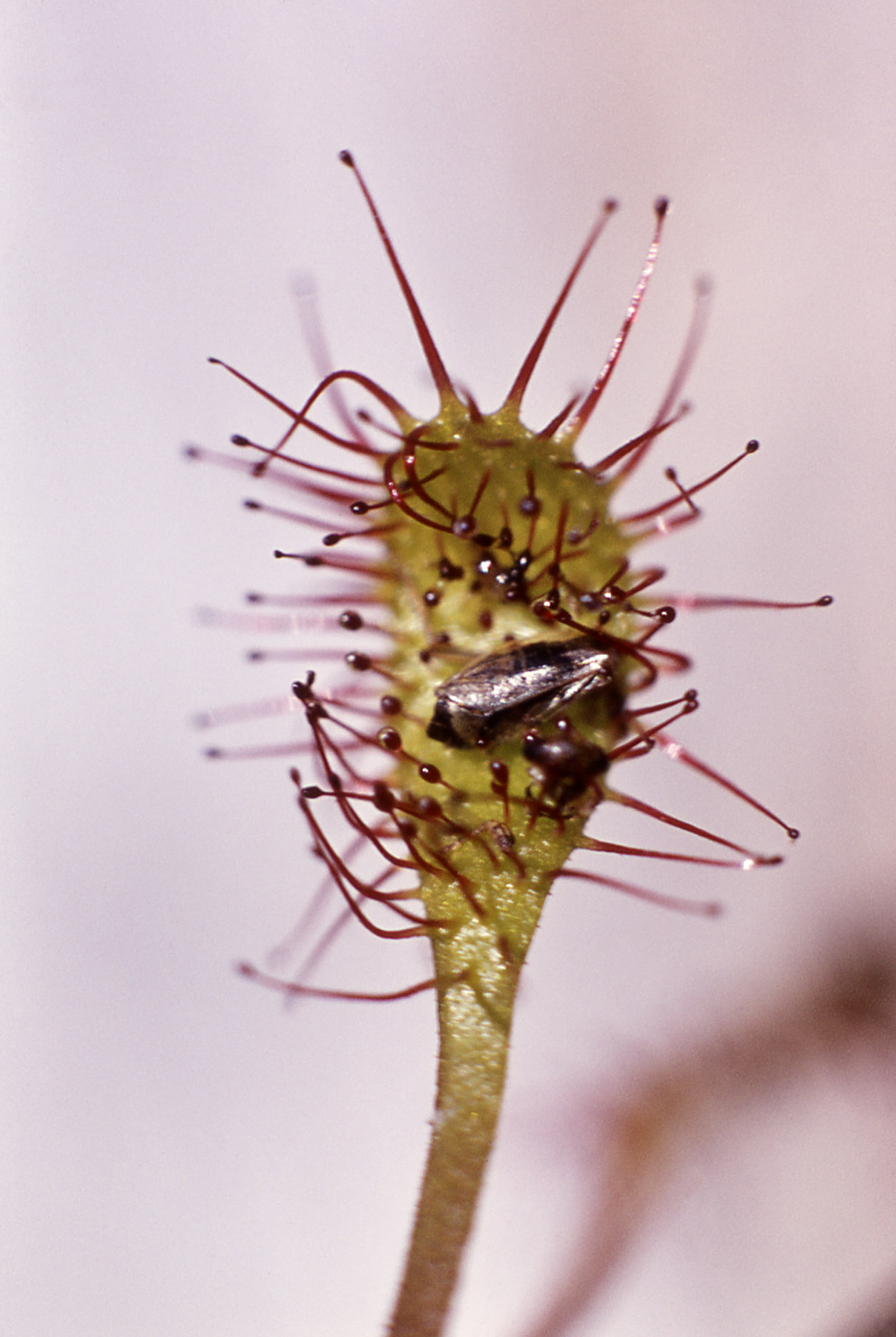
When naturalists first started studying plants, they denied that carnivorous plants existed. Pictures from earliest printings of plants showed only typical plants, omitting the dead insects normally found on the sticky surfaces of these charismatic flora. It took almost a hundred years after the first picture of carnivorous plants for one to finally be depicted in all of its carnivorous glory.
Bladderworts are one of the carnivorous plants found in Yellowstone and they grow in ponds. The tiny traps are considered some of the most sophisticated in the plant world, closing in 10/1000 of a second. Their selected prey - protozoa, water fleas, and mosquito larvae - are dissolved by digestive secretions. Other insects live inside the bladders in a symbiotic relationship (they do not get digested with the prey). If you want to see this plant, the YNP herbarium has a very nice collection.
Sundews, another carnivorous plant of Yellowstone, have red leaves that glisten with a mucilage (yum!) that attracts and traps insects. The leaves have tentacles with a substance on the end causing the insects to suffer death by suffocation. All carnivorous plants are able to live without the aid of their prey and would do just fine if they did not trap a single insect. They are also able to reset there trap. For example, when sundews have digested the insects, the tentacles with unfurl. In bladderworts, the trap door will reopen.

Previous posts in this series:
Housing the Plants of Yellowstone
